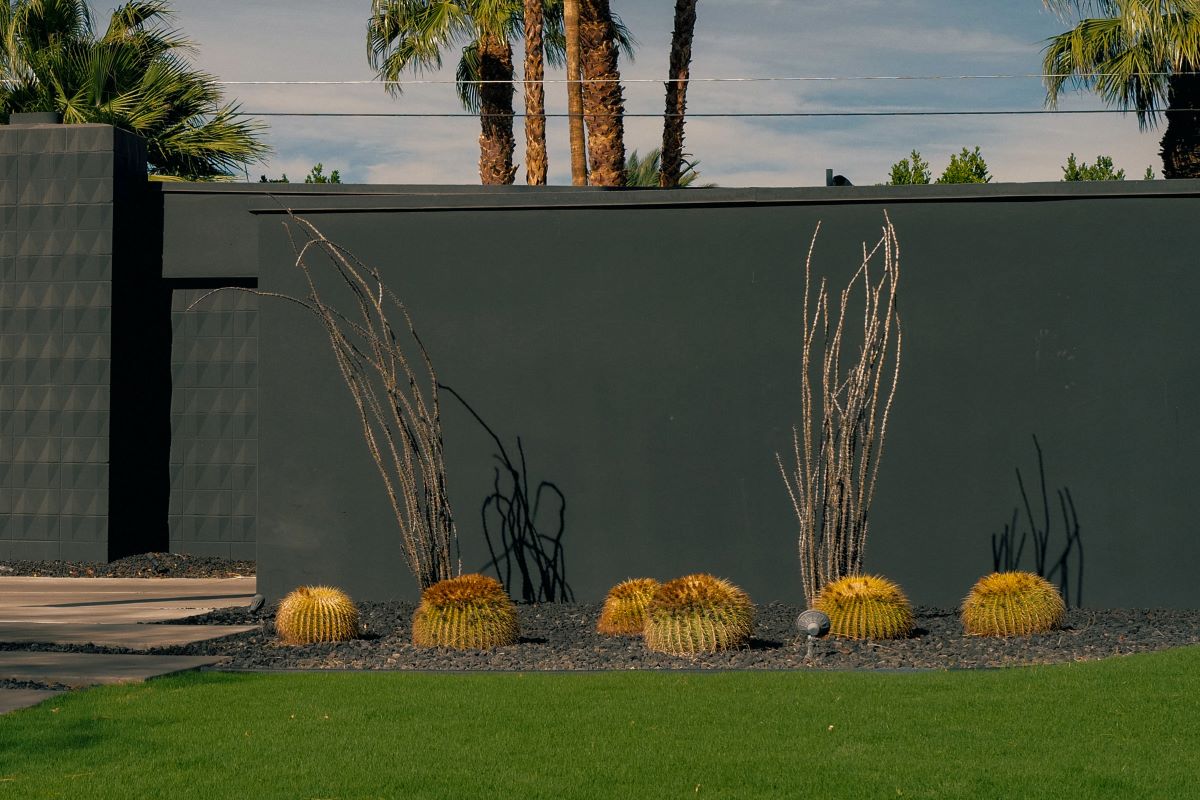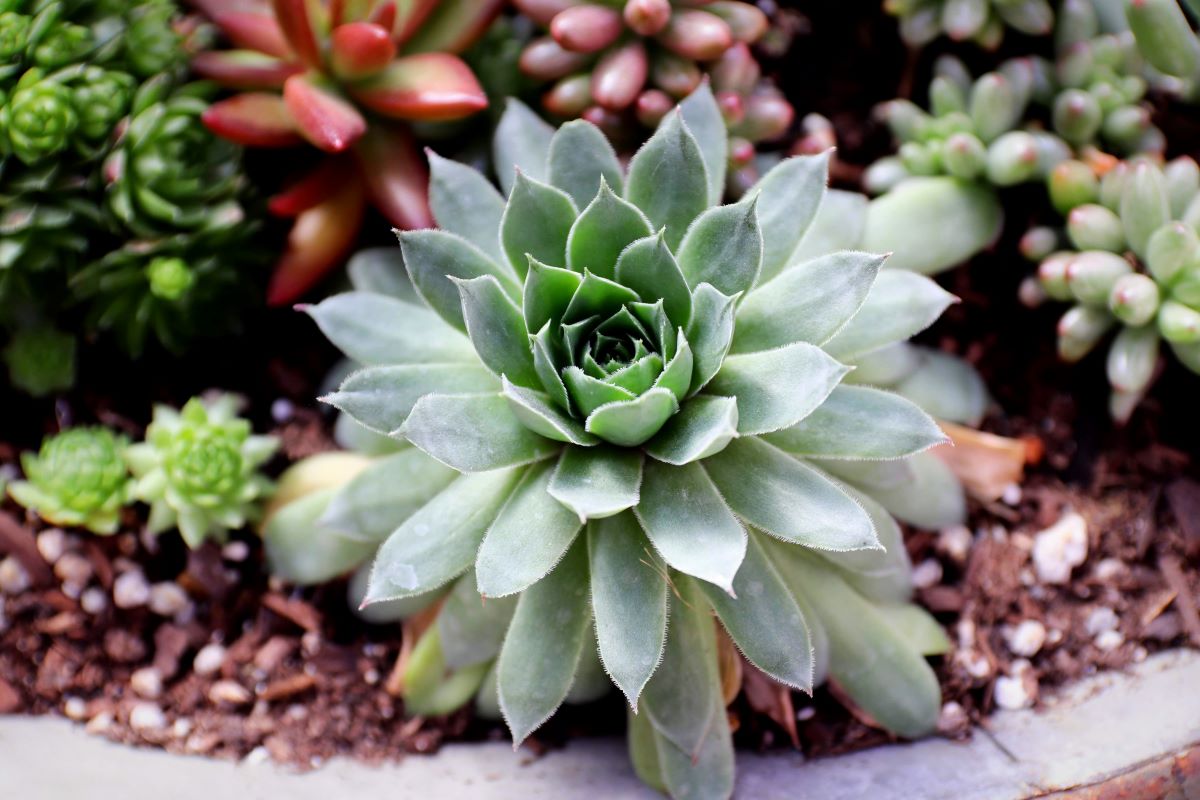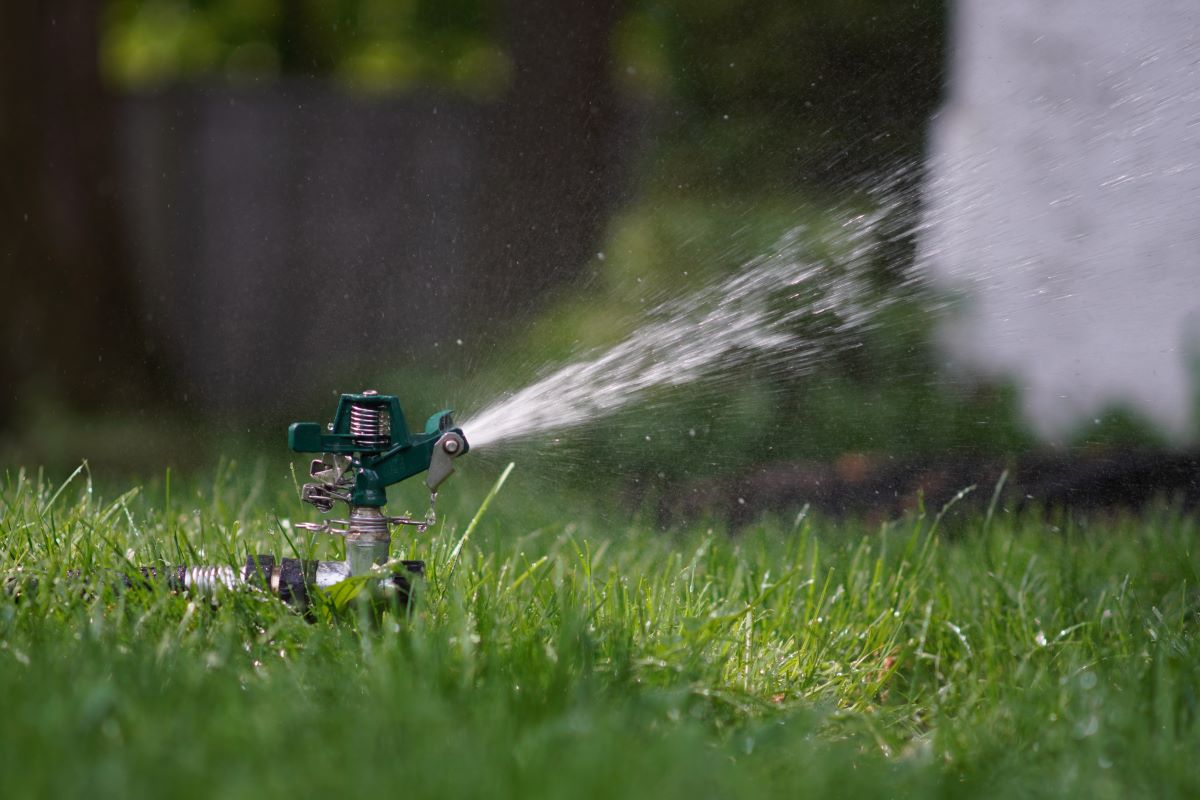Maintaining a beautiful yard is a point of pride for many homeowners. From keeping the grass mowed to planting flowers and manicuring shrubs and trees, a lot goes into keeping your yard and garden up to standard.
However, if you live in a hot climate or somewhere that experiences drought, like Tempe, AZ, or Albuquerque, NM, saving water while giving your lawn and plants enough water to thrive can be incredibly difficult.
But don’t worry, that’s where drought-tolerant landscaping comes in. With the proper planning, care, and the right plants, you can save thousands of gallons of water and still maintain a beautiful, healthy yard. Here are seven easy drought-tolerant landscaping ideas to get started.

1. Fix outdoor leaks to prepare for droughts
Effective use of water relies on your own practices but can also be attributed to proper maintenance. Whether you know it or not, pipes, spigots, hoses, sprinkler tubing, and other components of a watering system can develop weaknesses and, consequently, leaks.
Periodically, take time to inspect your system, looking for signs of issues. A slow-dripping faucet alone can cost hundreds of dollars a year in water expenses, so keep an eye out for any leaks or other problem areas to avoid wasting money on water you’re not even using.
Read more about how to prepare your home for a drought.
2. Add a greywater system for drought-tolerant landscaping
After you wash your hands or do the dishes, where does the water go? That’s right – it goes right down the drain. That is unless you put it to good use through a greywater system.
You may be wondering, what is greywater?
Greywater refers to wastewater from non-hazardous applications like washing hands, taking a shower, or any non-toilet-related use. This water is too contaminated to be used for any sterile application, but it is perfectly useful for things like watering grass and plants when properly treated. The components in this water that make it seem dirty are actually beneficial as fertilizer, perfect for growing plants.
If you have access to greywater in your area, taking advantage of it can be an excellent way to keep costs down while helping the environment. To get started with greywater:
- Explore city ordinances to ensure greywater use and collection are permitted
- Partner with a plumbing contractor to help create a device that accurately collects and applies greywater in a way that makes sense for your property
- Consider investing in a three-way valve to make it easy to divert water between greywater collection and your septic system
- Determine whether you want to use greywater with an irrigation system, like mulch basins, or through a hose for normal watering
3. Invest in drought-tolerant xeriscaping
Xeriscaping is a form of landscaping designed especially to withstand a drought. This process utilizes sustainable alternatives to traditional plants to reduce the need for watering property. Very popular in dry climates, this home improvement tactic maintains property values and creates a beautiful appearance for your front or backyard without standard flowers, bushes, shrubs, trees, or varieties of grass. Components frequently used in xeriscaping include:
Paving stones
Hardscape elements like these can add a creative element to your landscape design without incorporating more plants. Pavers are perfect for creating an outdoor patio. Throw in a canopy to shield yourself from the sun and also protect any plant that isn’t drought-tolerant.
Cacti
Drought-tolerant plants are an ideal addition to your garden or landscape design if you live in a dry climate, and nothing screams drought-tolerant like a cactus. Unlike other plants, cacti typically grow in drought-prone areas like deserts and can thrive in climates where growing plants is seemingly impossible. Incorporating native plants in a hot climate is a great way to create a drought-tolerant garden.
Mulch
Mulch consists of organic materials like bark and compost. In addition to preventing weeds and fertilizing the soil, it can be used to preserve moisture and prevent water loss. It’s a great gardening tool for gardeners hoping to maintain healthy plants.
Gravel pathways
A gravel path can serve dual purposes. From a design standpoint, it can add character to your front yard without requiring supplemental water. Secondly, it prevents people from walking on the lawn and potentially damaging surrounding plants in your lawn or garden. Foot traffic can also cause compaction issues, leading to soil erosion, so creating a gravel pathway from your house can prevent this.
Bluegrass
Bluegrass is an essential part of any drought-tolerant landscape. Because it becomes dormant during periods of hotter weather, it doesn’t need much moisture to survive during a drought. By contrast, ornamental grasses thrive in colder climates and will struggle if you plant them in drought-prone areas.
Succulent plants
Succulents are drought-resistant plants that retain moisture to survive in arid landscapes. These low-maintenance plants can add character to your landscape and don’t need much shade or water, making for easy, drought-tolerant landscaping. A cactus is an example of a succulent plant.

Xeriscaping is not a water-free endeavor, but the right tactics can reduce or nearly eliminate the need for regular watering, which makes it ideal for drought-tolerant landscapes. When design focuses on adequate irrigation and a beautiful layout, it’s possible to use limited watering to achieve stunning results.
4. Evaluate saturation to improve drought tolerance and avoid wasting water
The last thing you want to do in a drought-prone area is wastewater. Some yards will absorb water efficiently. However, if your property easily becomes oversaturated, you may lose water due to evaporation.
Overwatering your yard can result in damage to your lawn as well as an unnecessarily high water bill. Instead of assuming your lawn is properly absorbing the water, take time to evaluate during the process.
As you water, keep an eye out for any water pooling, which can signify compacted soil. If this occurs, immediately cease watering until water pools have disappeared.

5. Conserve by watering at the right time
When it comes to watering, all time isn’t made equal. There are better times to water your grass, so do your best to plan to water when it’s most effective. Keep these tips in mind to make the most of your water usage:
- Water your lawn in the morning when the weather is cooler. If you water your lawn in the middle of the day, when the sun is at its highest point, evaporation will cause significant water loss.
- Avoid watering on hot sunny days or in prolonged dry conditions. Your grass will bounce back when the climate improves.
- If you have to water later in the day, find time between 6:00 PM and 8:00 PM when the temperatures begin to drop.
6. Gather rainwater during non-drought seasons
If you live in an area that gets sporadic rain throughout the winter, collecting rainwater can be a huge benefit. By placing bins at the base of gutter spouts, you can tap into an essentially free water supply, allowing a low-cost way to keep your lawn looking its best.
Some collection buckets even feature attachments for hoses, making it extremely easy to transition from collection to use. Even if you need to supplement with a standard water line, this can still help you save in an eco-friendly manner and make your landscape more drought-resistant.
Note that some states and cities maintain laws related to rainwater collection, so do your due diligence before investing in this alternative. Water collection vessels are available in a wide range of sizes, so be sure you take the time to learn more about the average rainfall for your area.
7. Consider a drip irrigation system to conserve water and make your lawn drought-resistant
A drip irrigation system is among the best options to reduce the likelihood of wasted water. This irrigation system utilizes a network of thin hoses placed within the ground of your yard. These hoses can disperse water directly into the soil where you need it most.
Minimizing water usage during a drought can be inspired by a passion for the environment or a desire for frugality. No matter the reasons that motivate you, conserving water with drought-tolerant landscaping can help you cut down on your bills while doing what’s best for the planet.
The post 7 Drought-Tolerant Landscaping Ideas for a Greener Yard This Summer appeared first on Redfin | Real Estate Tips for Home Buying, Selling & More.
from Redfin | Real Estate Tips for Home Buying, Selling & More https://ift.tt/45yfD9m


No comments:
Post a Comment